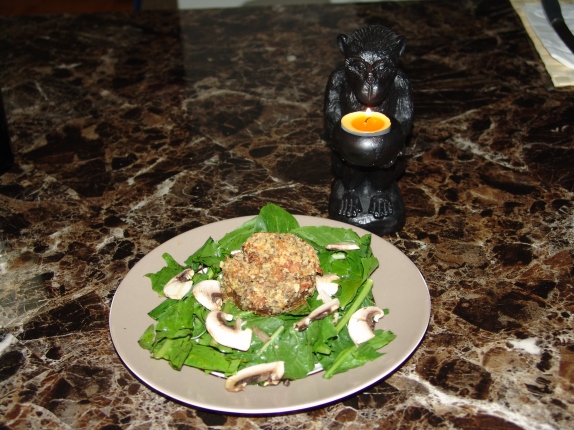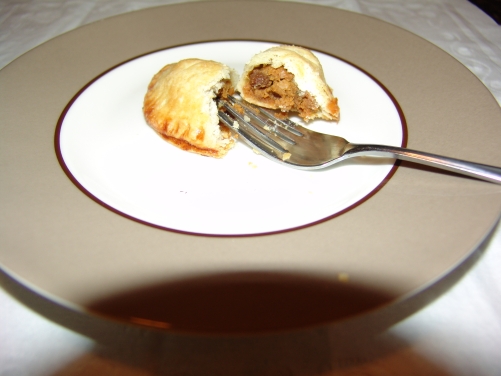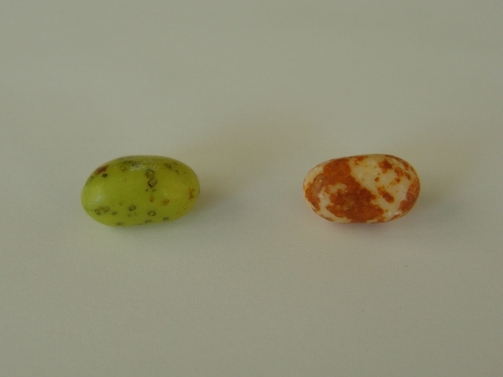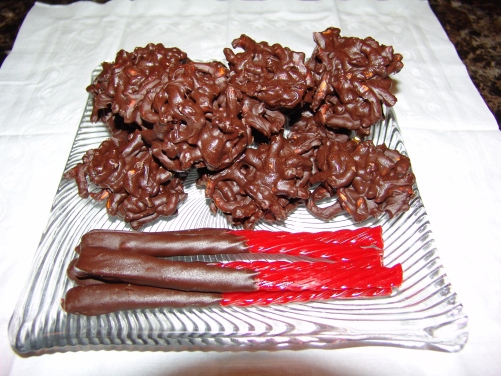THE BOOKS
Since the aim of this blog is to get people thinking about good food from great books and to encourage them to get more engaged with both, I thought that a first post was the perfect time to bring attention to the fact that September 25 – October 2, 2010 is the American Library Association’s “Banned Books Week.” Every year in this country, there are hundreds of cases of books being “challenged” in school curricula or simply removed from suggested reading lists and even public libraries. Often this controversy is begun at the behest of a small, but well-organized and vocal minority. Sometimes, the reason for the challenge is that the book in question contains mature subject matter, such as frank talk about sex or drugs that is considered to be age-inappropriate by those seeking its removal. However, more frequently the reason behind the attempted censorship is that it contains themes that are considered to be irreligious or politically offensive.
The purpose of ALA’s Banned Books Week is to call attention to all these attempts to suppress written ideas and to promote the free availability of books, even ones that contain controversial ideas or unpopular viewpoints. That all seems reasonable, but what should we do when these texts contain something darker? What about books that involve macabre tales of secret orders outside the realm of normal society, terroristic wars fought in the name of promoting the dark arts, rebellious young protagonists on the wrong side of the law who claim to embrace virtues, but do so in the name of no particular God or religion? It’s an important question; one that’s been vexing concerned US citizens for over ten years: What to DO about the Harry Potter books?
That’s right. According to The ALA , the seven books of J.K. Rowling’s Harry Potter series are collectively the most frequently challenged books of the past decade – usually based on allegations of promoting Godlessness and witchcraft, though I would also add the encouragement of gluttony! With this unsettling fact in mind and prompted by the mouth-watering, brain-tingling and highly imaginative descriptions of foods both magical and Muggle in origin, I took my wooden spoon and magic wand in hand to summon up a typical wizarding world dinner.
I find the keeping of House Elves to be morally reprehensible behavior. Beside which, they’re always getting into the butterbeer and denting the silver candlesticks during frequent bouts of self-chastisement traits that tend to make them FAR more trouble than help. In light of this lack of domestic help, a grand multi-course Hogwarts Holiday Feast was a bit beyond my reach. Instead, I opted for the sort of homey meal that Mrs. Weasley might offer her brood for a leisurely Sunday lunch at The Burrow. Think of it as classic British food with an enticing smattering of somewhat more exotic ingredients.
THE FOOD
Appetizer:
Toadstool Surprise – Fungi have long been associated with magic in many cultures, which makes them a natural for inclusion in the Potter books. In fact, Medieval Flemish painters vividly associated them with the underworld. However you have nothing to fear from these plump bacon and breadcrumb stuffed mushrooms served on a bright salad of bitter dandelions. All ingredients are fresh from the Hogwarts Herbology Department greenhouse. Recipe attribution to Professor Pomona Sprout, who swears that a few bites of Amanita Muscaria never hurt anyone.
Entrée:
Roast of Beef with Gravy and Individual Yorkshire Puddings, Gringott’s Green & Gold Vegetables – While some of the foods in Harry Potter’s world are the purely product of JK Rowling’s imaginary pantry, many are drawn from traditional British cookery In fact the tables so frequently feature solid, meat and potatoes type dishes that visiting French witch Fleur Delacourt is led to complain about “Ze ‘eavy, ‘ogwarts food…” While I’ll agree with Fleur that it’s not the sort of thing one wants to eat at every meal, this old-fashioned slow-roasted joint of beef is a lovely change of pace from lighter more modern fare. A slice of the herb-scented roast is best enjoyed with its accompanying rich gravy spooned over a crispy, fluffy Yorkshire pudding and paired on the plate with some seasonal vegetables.
Vegetables are often mentioned as a sidelight to Wizard meals, so I chose a duo of garlic sautéed Brussels sprouts and ginger glazed carrots. The bright green and gold colors recall the glittering contents of the vaults at Gringott’s goblin bank.
Dessert:
Pumpkin Pasties
In Muggle cuisine a pasty typically refers to a type of hand-held baked pie made with lard or shortening crust and containing a savory filling of ground or cubed meat and/or vegetables. These pies are English street food at its most basic and echo recipes that have been in circulation since the late Middle Ages.
Though they are a featured favorite on the Hogwarts Express and in the magical town of Hogsmeade, it’s never specified if pumpkin pasties are actually savory in taste. Therefore as an acknowledgement to the wizard tendency toward wordplay, trickery and surprises, I’ve decided that these little pies are a trick for the eye and a treat for the tongue. The replicate the look of a meaty Muggle pasty, but one bite tells the diner that they are full of sweetly spiced autumn fruits like apples, raisins and of course, pumpkin.
Assorted Magical Sweets
Bertie Bott’s Every Flavor Beans are strictly an “eat at your own risk” food.
I strongly suspect that the one on the left in this photo is vomit flavored and the one on the right may be booger – caution in consumption is clearly warranted!
Crunchy Cockroach Clusters are more harmless than they seem. With irregular looking chunks of crumbled pretzels standing in for wiggly legs and antennae, they get their crisp salty and sugary flavor from relatively wholesome ingredients. And finally a dish of sweet Licorice Wands work their magic only on your taste buds.
I hope you’ve enjoyed this trip through weirdly delectable world of Wizard cuisine as brought vividly to life in Ms. Rowling’s books. The Harry Potter series challenges readers of all ages to envision lush combinations of existing and hypothetical flavors while encouraging them to open their minds and mouths to try something new. If the worlds of the library or kitchen are turned over to the small minds and narrow palates of those who would suppress flights of fantasy in favor of any cultural agenda there would soon be little left to tantalize thinkers or tasters. I encourage you to visit the ALA Banned Books Week site, to learn more and join the fight to keep access to information free in America.
THE RECIPES
Toadstool Surprise:
- 1 package jumbo “Stuffing” mushrooms
- 2 stalks celery – diced
- 1 small onion or two shallots – diced
- 1 clove garlic (or more to taste) – minced
- 5 slices of thick cut bacon
- 2 cups fresh or unseasoned purchased breadcrumbs (more may be needed)
- 1/4 cup grated parmesan or romano cheese
- 2-3 sprigs fresh thyme, stemmed and miced
- 1 sprig of fresh rosemary, stemmed and minced
- salt and pepper to taste
- 1/4 cup white wine or stock
- Olive oil to drizzle
Preheat oven to 375F
Select the 6- 8 biggest, most attractive mushrooms in the package. Remove stems, and using a teaspoon or paring knife, gently scrape out the dark brown gills to create a deep cup. Discard gills, dice the stems and remaining mushrooms finely and set aside for use in stuffing.
Cut the bacon into lardons by cutting each piece across the short side into narrow strips, then slicing those strips into rough cubes or chunks – the pieces should be large enough to provide some chew, but small enough to blend into the stuffing mixture. Sautee the bacon in a deep frying pan over medium heat until the fat is rendered and the lardons are golden and crispy.
To the pan of bacon add the onions, garlic and celery, stirring frequently until the vegetables are aromatic and softened. Stir in the reserved diced mushrooms, add thyme, rosemary, salt and pepper. Cook over medium heat until the mushrooms become soft. add wine or stock and cook and additional 5-7 minutes. Remove mixture from heat and let cool for 5 minutes.
In a mixing bowl, toss breadcrumbs with Parmesan and stir in the cooked bacon/vegetable mixture, mixing well to form a slightly damp stuffing. The stuffing should NOT be wet or sticky, rather it should easily hold together in clumps when pressed. If it is dry and crumbly sprinkle with additional liquid. If it is very soggy, add more breadcrumbs or cheese.
Rub mushroom cups with a bit of olive oil inside and out. Stuff the cups, using clean hands works best, pressing the filling firmly into each cup and mounding it up over the edge. Drizzle the stuffed cups with a tiny bit of additional olive oil to aid in crisping.
Place in a baking pan large enough to hold all mushrooms without crowding and bake in the oven for 15-25 minutes – this depends upon the size of your mushrooms. The filling is already cooked through, so when the mushrooms cups appear cooked and the stuffing looks browned and crunchy – remove them.
Serve atop a simple salad of your favorite greens that have been lightly tossed with a tart vinaigrette.
Makes 6-8 mushrooms.
Individual Yorkshire Puddings
- 3 eggs
- 1 cup all-purpose flour
- 1 cup milk
- 1/2 tsp salt
- 4 tbsp melted butter or drippings from a roast
Pre-heat oven to 375F
Grease muffin pan by pouring melted fat into the bottom of each cup. If you are using a regular muffin pan with 12 cups, use 1/3 Tbsp in each cup. However, if you are using a jumbo muffin pan like I did, pour 1/2 Tbsp into each of the 8 cups. Place the pan in the hot over for 5 minutes to warm the metal.
In a large bowl, whisk the eggs, milk and salt until well-blended. Whisk in the flour, stirring vigorously until the batter is smooth and lump free. It should be VERY thin.
Pour batter into hot muffin cups, dividing evenly and not filling more than 2/3 of the cup.
Place in hot oven to bake for 15-25 minutes. The smaller puddings will require less time to puff and set than the larger ones. The puddings are done when they are golden, puffy and firm to the touch.
Note that these will puff dramatically, so be sure to provide enough overhead space for them to cook without hitting the top of the oven or another rack. Figure on leaving about 3 inches or so of headroom. They will be very fluffy around the edges, but appear fallen in the middle. The puddings will also shrink a bit as they cool, so be sure to serve piping hot from the oven.
Yorkshire puddings are traditionally served alongside a roast with some of its gravy ladled over their tops.
Makes 8 jumbo or 12 smaller puddings.
Pumpkin Pasties:
- 1 large can pureed pumpkin or 2 cups homemade puree
- 2 large tart apples -I used Ginger Golds
- 1 box raisins – soaked in 2 tbsp rum or hot water
- 1/3 cup chopped walnuts
- 2 tbsp butter
- 1/4 cup brown sugar
- 4 eggs
- 2 cans condensed milk
- 1 cup sugar (more or less to taste)
- 1/2 tsp ground cloves
- 1 tsp cinnamon
- 1/2 tsp nutmeg
- pinch salt
- pinch black pepper
- 1 recipe your favorite pie crust (purchased or homemade) – enough for a double crust 9 inch pie.
- 1 egg beaten with 1 Tbsp water
- sugar for sprinkling
Filling:
Preheat oven to 425F
Peel, core and chop apples into small cubes. Sautee in butter over medium heat until they soften and give off their juices. Add raisins with their soaking liquid, walnuts, spices, salt, pepper and brown sugar. Cook for 5 minutes stirring until the mixture is warmed through and the brown sugar has melted and is bubbling. Remove from heat and cool to room temperature.
In a large mixing bowl, beat eggs with sugar and condensed milk until thoroughly blended. Stir in pumpkin puree, and apple mixture. Blend to distribute solid ingredients.
Pour the filling into a baking dish and bake for 15 minutes, then drop the oven temperature to 350F and continue baking for 45-50 minutes or until the custard is firm and set all the way through. Remove from oven and chill for at least 2 hours. THE FILLING MUST BE COOLER THAN ROOM TEMPERATURE WHEN STUFFING PASTIES.
Assembly:
Preheat oven to 350F
Roll out pie crust to 1/8 in think – standard thickness for a pie’s top crust. Using a drinking glass or biscuit cutter, punch out circles approximately 3 inches in diameter. You should be able to get 24 crusts – perhaps a few more if you’re thrifty with the scraps. You will have filling left over. This can be frozen and thawed to make a future batch of pasties, or you can double the yield, by using a second batch of pie crust. Additionally, the custard is delicious served warm on its own with a bit of vanilla ice cream.
On each crust, place a mounded tablespoon of filling just off-center and pinch the edges of the round crust together to form a half-moon shape. Use a fork to crimp the edge tightly to seal in the filling and for decoration. Lay pasties on 2 baking sheets, brush each one with the egg glaze and sprinkle with sugar. Using a sharp paring knife, cut three small slits into the plump belly of each pasty.
Bake for 25 minutes or until the crusts are crunchy and golden. Serve warm or a room temperature.







